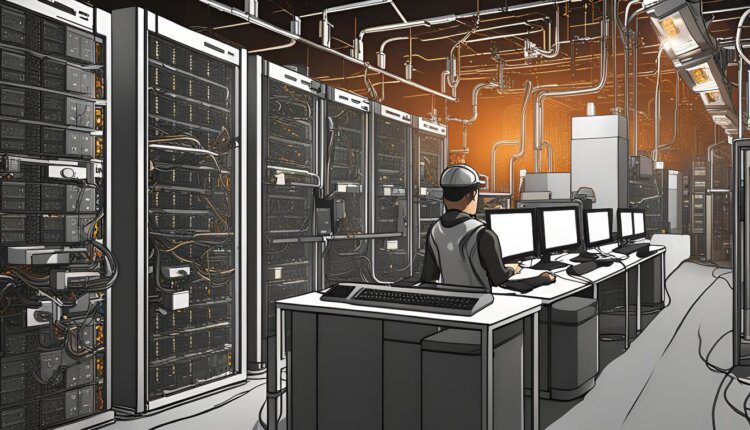Bitcoin Miners Face ‘Max Pain’ as Mining Difficulty Hits Record Highs Amid Market Struggles

Bitcoin miners are grappling with historically low earnings as mining difficulty reaches all-time highs. With hash prices plummeting, the industry faces a critical turning point, potentially signaling a market bottom.
Bitcoin miners are currently enduring one of the most challenging periods in the cryptocurrency history. As of August 4, the hash price—a key metric that quantifies the earnings miners can expect from a specific amount of hashrate—plummeted to an all-time low of $35 per petahash per day. This figure represents the lowest earning potential in the history of Bitcoin mining, according to data from the Hashrate Index.
Adding to the strain, the Bitcoin network hash rate soared to a record 673 exahashes per second on July 26, making it the most difficult it has ever been to mine a new block. This increase in mining difficulty, coupled with declining rewards due to the recent halving, has placed immense pressure on miners, particularly those without access to next-generation mining equipment.
Online advertising service 1lx.online
Bitcoin current trading price of $59,200 marks a 1.5% drop, capping off a volatile week where the asset fluctuated between $50,000 and $60,000. The uncertainty in Bitcoin’s price movement has left miners struggling to maintain profitability, as their earnings continue to dwindle.
Global Mining Competition and Centralization Concerns
Bitcoin mining operates as a global competition where specialized computers race to solve complex mathematical problems. Every ten minutes, on average, a miner successfully finds the solution and is rewarded in Bitcoin. However, the April 20 halving reduced this reward by half, compounding the challenges miners now face.
The current economic landscape has forced many miners to shut down their operations, leading to a natural selection process where only those with the most efficient equipment and operations remain active. While this promotes overall system efficiency, it also raises concerns about centralization within the mining industry.
Bitmain, a leading manufacturer of mining hardware, is believed to control a significant portion of the market—estimates suggest as much as 80-90% of the hardware in use today. This dominance, combined with the survival of only the most capitalized entities, fuels fears of centralization, particularly at the level of mining pools. Bitcoin core contributor Matt Corrallo has identified mining pool centralization as one of the biggest threats to the Bitcoin ecosystem.
Dire Straits for Miners
The situation has become increasingly dire for miners who have not upgraded to next-generation machines. Colin Harper, Editor-in-Chief of Blockspace Media, described the current hash price as “brutal,” noting that it reflects a broader trend of declining margins over the past year. The combination of a record-high hash rate and Bitcoin’s price dipping below $50,000 has only exacerbated the pain for miners.
“Mining margins have never been thinner, and miners who aren’t using next-gen machines are really sweating right now,” Harper explained, highlighting that miners are experiencing “max pain” as they struggle to remain operational.
Is the Bottom In?
Online advertising service 1lx.online
The financial turmoil of the past week, driven by an unwinding carry trade originating in Japan, sent shockwaves through global markets, including cryptocurrency. Bitcoin’s price fell to a low of $49,000, while Ethereum dropped to $2,200. For many, this sudden downturn felt like a market bottom.
Charlie Spears, co-founder of Blockspace Media and a miner in Oklahoma, noted that the combination of Bitcoin’s price falling to $50,000 and a 10% increase in mining difficulty suggests that the bottom may be in. Spears observed that these events likely caused those barely hanging on to shut down their operations, signaling a potential turning point.
The New Mining Meta: Rack Space
In the aftermath of the halving, which occurs approximately every four years, miners are grappling with the reality of a 50% reduction in revenue. Colin Harper questioned whether the current environment—characterized by low hash prices, record-high difficulty, and broader economic uncertainties—necessitates establishing a floor price for hash prices.
As energy concerns and the shift toward renewable sources impact the industry’s expansion, a new focus is emerging: rack space. This refers to the physical infrastructure that houses mining operations, and as only the most capitalized companies with next-generation infrastructure remain profitable, rack space is becoming increasingly valuable.
Online advertising service 1lx.online
“Rack space is king,” Spears asserted, predicting that the next year will see miners asking, “Who owns the rack space?” This shift underscores the changing dynamics of the Bitcoin mining industry as it adapts to a more challenging and competitive environment.
Our creator. creates amazing NFT collections!
Support the editors - Bitcoin_Man (ETH) / Bitcoin_Man (TON)
Pi Network (Guide)is a new digital currency developed by Stanford PhDs with over 55 million participants worldwide. To get your Pi, follow this link https://minepi.com/Tsybko and use my username (Tsybko) as the invite code.
Binance: Use this link to sign up and get $100 free and 10% off your first months Binance Futures fees (Terms and Conditions).
Bitget: Use this link Use the Rewards Center and win up to 5027 USDT!(Review)
Bybit: Use this link (all possible discounts on commissions and bonuses up to $30,030 included) If you register through the application, then at the time of registration simply enter in the reference: WB8XZ4 - (manual)
